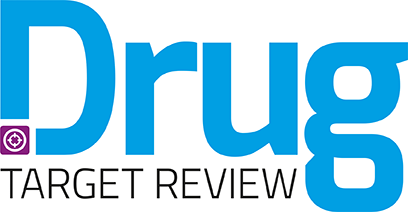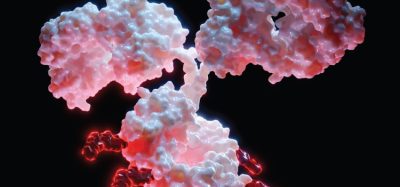Advancements in hit identification for membrane protein drug discovery
Posted: 7 April 2025 | Philip Rawlins (Group Leader at Domainex) | No comments yet
GPCRs are crucial drug targets, but their complex structures present significant challenges in drug discovery. In this article, Domainex’s Philip Rawlins explores how fragment-based screening and innovative technologies like PoLiPa are helping to overcome these hurdles, with a focus on the Adenosine A2a receptor.


The challenge of GPCR drug discovery
G protein-coupled receptors (GPCRs) are one of the most desirable and challenging target classes in drug discovery, as their mutation can lead to a wide range of diseases such as cancer, cardiovascular disorders and neurological conditions. GPCRs are a large family of cell surface receptors that play a key role in transmitting signals from the outside of a cell to its interior. Involved in various physiological processes, such as vision, taste, smell, immune response and neurotransmission, GPCRs are activated by various molecules including hormones, neurotransmitters and environmental stimuli, which trigger a cascade of cellular events that help regulate bodily functions. GPCRs are critical targets for drug development due to their involvement in numerous disease pathologies, with many medications working by either activating or inhibiting these receptors.
Advancements in screening technologies for small-molecule drug discovery – including cellular assays, computational screening, and biophysics-based methods enhanced by structural biology breakthroughs – have improved screening hit rates and facilitated the identification of drug candidates for previously ‘undruggable’ targets. Despite these gains, the failure rate of drug candidates in clinical trials remains troublingly high, with lack of efficacy historically being one of the primary reasons.1 This is partly due to a failure to adequately characterise the GPCR target.
Isolating GPCRs for structural characterisation is challenging as they are membrane bound, often losing their natural structure and function when isolated.
Isolating GPCRs for structural characterisation is challenging as they are membrane bound, often losing their natural structure and function when isolated, making them difficult to study in vitro. They are also highly dynamic, with conformations that shift depending on their interactions with ligands. Furthermore, GPCRs are sensitive to those detergents typically used to extract membrane proteins, thus hindering the ability to isolate them. Techniques like X-ray crystallography and traditional purification methods are limited because GPCRs are inherently unstable when removed from their native membrane context, and they do not crystallise easily, making structural analysis difficult.2
Considering 25–30 percent of marketed drugs work by binding to GPCRs,3 it is vital that these challenges are overcome through innovation and research.
Fragment-based screening (FBS) has emerged as a powerful tool for discovering novel lead compounds, especially for challenging targets like the Adenosine A2a receptor.
This article explores the potential of fragment-based screening in the GPCR landscape through the lens of the Adenosine A2a receptor, showcasing the development of methods that could help to overcome historical roadblocks in GPCR drug discovery.
GPCRs and their therapeutic relevance
GPCRs are the largest family of membrane receptors in humans, with the genes for GPCRs accounting for over three percent of human genes. They play a critical role in mediating a wide array of bodily processes and signalling pathways3 and are thus highly sought-after drug discovery targets due to their involvement in key signalling pathways.
The Adenosine A2a receptor plays an important role in many biological functions, such as cardiac rhythm, coronary circulation, immune function, pain regulation, sleep and preventing tissue inflammation. This receptor is also expressed in the brain, where it helps to regulate dopamine release, making it a therapeutic target for the treatment of insomnia, pain, depression and Parkinson’s disease. This crucial role in regulating vital bodily processes makes it a highly important drug target within GPCR research.
Challenges in drugging the Adenosine A2a receptor
Researchers face specific challenges in developing drugs that target the Adenosine A2a receptor. The structural complexity of GPCRs makes it difficult to target stable structures during drug discovery and makes ligand optimisation a complex process. High-throughput screening (HTS) methods are time consuming and expensive so other hit identification methods, such as FBS, are highly desirable.
PoLiPa technology
Domainex’s Polymer Lipid Particle (PoLiPa) technology offers a versatile, detergent-free platform for the rapid, high-purity preparation of membrane proteins like GPCRs, ion channels and solute carriers, enabling assay development for these challenging targets.
In this process, membrane proteins are encased in a polymer that contains a small disc (known as a nanodisc) of the native cell membrane lipids, ensuring pharmacological stability by mimicking the cell’s native environment. This stability enables the application of hit identification approaches such as fragment-based screening (FBS).
The development of PoLiPa technology marks a new era in membrane protein drug discovery, rendering otherwise difficult targets accessible to structural biology, biophysical assays and other screening technologies.
Fragment-based screening
FBS offers an efficient and flexible approach to hit identification that helps to identify novel therapeutic starting points that other methods may have missed due to the small molecular size of the fragments.
FBS differs from traditional high-throughput screening by using smaller, lower molecular weight compounds (fragments) to probe target proteins. These fragments typically bind weakly, but because they are small, they can be highly ligand efficient and identify new binding pockets or modes of interaction.
However, this usually requires access to purified proteins that can be difficult to obtain at high yields when working with GPCRs. The use of detergents in receptor extraction also disrupts the protein’s natural environment, which can lead to low activity levels.
PoLiPa detergent-free stabilisation of membrane proteins enables the application of fragment-based screening to GPCRs, expanding the method’s possible targets and opening the potential to develop novel therapeutics agents as a result.
Case study: fragment screening with polymer-encapsulated nanodiscs
Domainex carried out a case study to illustrate that polymer-encapsulated nanodiscs of A2a are physiologically folded and suitable for biophysical fragment screening.
The Adenosine A2a receptor was expressed in insect cells using a baculoviral expression system. The GPCR was then purified using a PoLiPa polymer formulation rather than traditional detergent extraction methods.
The binding of three known small molecule antagonists was confirmed by nano differential scanning fluorimetry (nanoDSF) showing that the polymer-purified Adenosine A2a receptor was stable and physiologically folded.
Spectral Shift technology from NanoTemper, which monitors ligand binding to the target through changes in fluorescence, was then used to measure shifts in the emission profile of a fluorescent tag bound to the Adenosine A2a protein.
Changes in the emission profile are typically induced by ligand binding altering the chemical environment of the dye, either through proximity or conformational changes.
The Adenosine A2a receptor was successfully labelled using the non-covalent affinity-based NanoTemper RED-tris-NTA dye. A Spectral Shift assay was developed and validated by measuring the affinity of four known A2a receptor antagonists. The affinities determined were in accordance with literature values.
A pilot screen was performed using a subset of Domainex’s in-house fragment library. One hundred and sixty fragments were tested at a single concentration (250µM) with theophylline used as a positive control. The pilot screen was successful with a hit rate of 9.4 percent.
In addition, 800 further fragments from Domainex’s library were screened using the same method, resulting in a total of 125 initial hits being identified. A second single-concentration screening step at 100µM was performed to eliminate the weaker hits and select the best binders for affinity determination. A total of 31 fragments were selected and screened using a 12-point 1:1 dilution series from a top concentration of 250µM. The negative logarithm of the dissociation constant (pKD) and ligand efficiency values were determined for the final set of hits, identifying 19 promising hits with ligand efficiencies greater than 0.3.
Advantages of the approach
The fragment-based approach enables hit identification to be performed using smaller libraries, typically identifying compounds with higher ligand efficiencies than might be found via an HTS, which requires a very large compound library to be screened.
PoLiPa nanodiscs enable the purification of membrane proteins in a detergent-free and therefore more native environment. This may allow the identification of novel hits, for example to allosteric sites which might otherwise be missed. Domainex’s method can be applied to other orphan or poorly understood GPCRs, unlocking new opportunities for drug discovery through fragment-based or targeted library-based approaches.
PoLiPa nanodiscs enable the purification of membrane proteins in a detergent-free and therefore more native environment.
The purification of the Adenosine A2A receptor through PoLiPa and the subsequent screening illustrates the transformative potential of fragment-based screening combined with biophysical techniques. Although GPCRs present particular challenges for drug discovery, innovative approaches are making significant inroads, promising more effective treatments for a range of diseases.
Conclusion
The Adenosine A2a receptor was successfully purified using detergent-free, polymer-encapsulated nanodiscs, and physiological folding and stability of the membrane protein were validated using nanoDSF and Spectral Shift. A total of 960 fragments were screened, leading to the identification of several promising hits for further study, highlighting the compatibility of PoLiPa with Spectral Shift and the power of combining the two techniques. This study marks a potential first in using polymer-encapsulated native nanodiscs for fragment screening, representing a significant advancement in hit identification methods for membrane protein drug discovery.
References
- Sun D, et al. (2022) ‘Why 90% of clinical drug development fails and how to improve it?’, Acta Pharmaceutica Sinica B, 12(7), pp. 3049–3062. doi:10.1016/j.apsb.2022.02.002.
- Jones EM, et al. (2020) ‘Structural and functional characterization of G protein–coupled receptors with deep mutational scanning’, eLife, 9. doi:10.7554/elife.54895.
- Rehman S. (2023) Biochemistry, G protein coupled receptors, StatPearls [Internet]. Available at: https://www.ncbi.nlm.nih.gov/books/NBK518966 (Accessed: 23 September 2024).
Meet the author


Related topics
Assays, Drug Discovery, Drug Discovery Processes, GPCRs, High-Throughput Screening (HTS), Ligands, Structural Biology, Target Validation
Related conditions
Cancer, Cardiovascular disorders, inflammation
Related organisations
Domainex
Related people
Philip Rawlins (Group Leader at Domainex)








